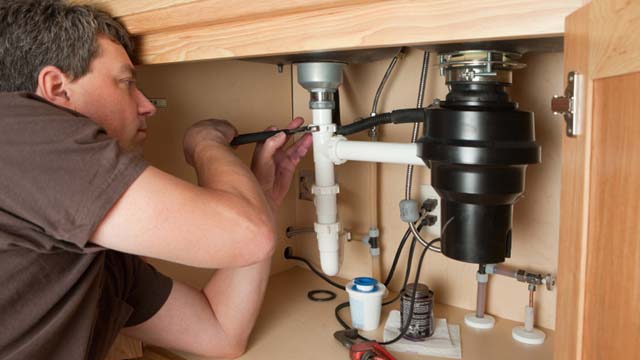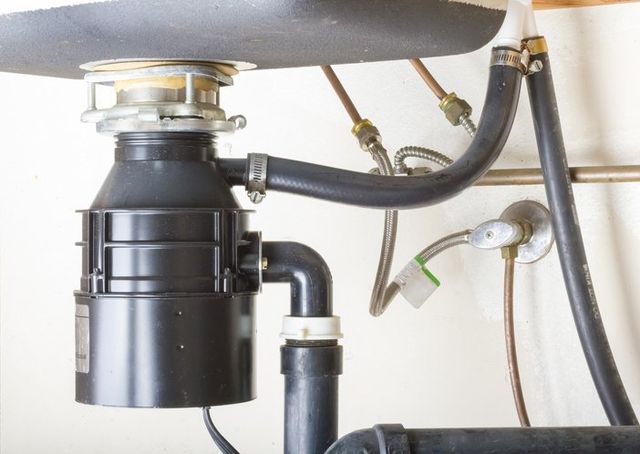Straightforward Ways to Repair a Leaky Waste Disposal Unit
Straightforward Ways to Repair a Leaky Waste Disposal Unit
Blog Article
What are your ideas about The Handy Guide To Fixing Your Garbage Disposal Leaking?

Garbage disposals are necessary kitchen devices that assist in dealing with food waste successfully. However, a dripping garbage disposal can be an irritating and untidy problem to handle. Thankfully, several leaks can be fixed quickly with a few straightforward actions. In this short article, we will review just how to deal with a leaking garbage disposal efficiently.
Introduction
Garbage disposals are mounted under kitchen area sinks and are designed to shred food waste into smaller pieces, allowing it to pass through the pipes system quickly. While these gadgets are usually trustworthy, leakages can take place with time because of damage, loosened connections, or damage to the system.
Usual Reasons For Leaks in Trash Disposals
Worn Seals and Gaskets
Seals and gaskets play an important role in protecting against water from leaking out of the garbage disposal. In time, these parts can degrade, resulting in leakages around the disposal device.
Loose Links
The links between the garbage disposal and the plumbing system can end up being loose gradually, triggering water to leakage out throughout operation.
Cracks or Holes in the Disposal Device
Physical damages to the waste disposal unit, such as splits or openings in the housing, can also result in leakages.
Identifying the Source of the Leakage
Prior to attempting to fix a dripping waste disposal unit, it is important to determine the source of the leak. This can usually be done through aesthetic examination or by carrying out straightforward examinations.
Visual Evaluation
Inspect the waste disposal unit system very carefully for any indications of water leak. Pay very close attention to areas around seals, gaskets, and connection points.
Examining for Leakages
One means to test for leaks is by running water via the disposal device and checking for any type of visible signs of leak.
Devices and Products Needed for Fixing a Dripping Waste Disposal Unit
Prior to starting the fixing procedure, collect the necessary tools and products, including a screwdriver, flexible wrench, plumbing professional's putty, replacement seals or gaskets, and epoxy or patching material for repairing splits or openings.
Step-by-Step Guide to Dealing With a Leaking Garbage Disposal
Switch off the Power
Before trying any kind of fixings, guarantee that the power to the waste disposal unit unit is turned off to stop the risk of electric shock.
Find the Leak
Identify the precise place of the leakage and identify the reason.
Tighten Links
Use a wrench to tighten up any loose links in between the disposal unit and the pipes system.
Change Seals or Gaskets
If the leakage results from worn seals or gaskets, get rid of the old parts and replace them with new ones.
Patching Fractures or Holes
For cracks or holes in the disposal device, usage epoxy or a suitable patching product to seal the damaged location.
Evaluating the Waste Disposal Unit After Repair
Once the fixing is total, check the waste disposal unit by running water through it to guarantee that the leakage has been settled.
Preventive Maintenance Tips to Avoid Future Leaks
To prevent future leaks, it is necessary to execute regular upkeep on your waste disposal unit. This consists of maintaining it clean, avoiding placing non-food things or tough items down the disposal, and periodically looking for leakages or various other concerns.
Verdict
In conclusion, dealing with a leaking garbage disposal is a relatively simple process that can be finished with basic tools and products. By following the actions described in this write-up and exercising preventative upkeep, you can maintain your waste disposal unit in good working problem and stay clear of pricey repairs in the future.
HERE’S HOW TO FIX YOUR GARBAGE DISPOSAL
WHAT TO DO IF SOMETHING IS STUCK IN YOUR GARBAGE DISPOSAL
If the impeller won’t turn, there’s probably something stuck in the disposal. It could be a steak bone or peach pit, although plumbers report pulling all sorts of inappropriate objects out of disposals, such as bottle caps or aluminum foil. Make sure power to the disposal is off, and look inside to see if you can see the source of the jam.
Never stick your fingers in a disposal. Pull out anything you see with tongs or pliers.
If the disposal still won’t work, it may be time to call a plumber or consider buying a new disposal. GEM Plumbing & Heating is here for all of your garbage disposal needs.
WHAT TO DO IF YOUR GARBAGE DISPOSAL DRAIN IS CLOGGED
Take everything out from underneath your sink and put a bucket or other container under your disposal to catch any water that drains out. Disconnect your disposal from the power supply. If it’s plugged into a wall outlet, unplug it. If it’s hardwired into an electrical box, go to the electrical panel and turn off the breaker for the disposal. Pour ¼ cup of baking soda into the drain, followed by ½ cup of white vinegar. Give the solution a few minutes to fizz and do its work. Look into the disposal with a flashlight to see if you can see an object that might be causing the clog. If you see it, remove it using tongs or pliers. MORE TIPS ON DEALING WITH A CLOGGED GARBAGE DISPOSAL
Never use drain cleaner in a garbage disposal. It can damage the plastic parts inside the disposal. You can also be splashed with the caustic liquid while working to clear the clog. Beware! Never stick your fingers into a garbage disposal. Trust us — not a good idea. In many instances, your dishwasher drains through your garbage disposal. This allows the disposal to grind any large food particles that may be drained out of your dishwasher. There are some jurisdictions, however, where the plumbing code prohibits such a connection. WHAT TO DO WHEN YOUR DISHWASHER DRAINS THROUGH THE DISPOSAL
Run some water in the sink so your plunger has at least a ½-inch of water to create a seal and plunge vigorously up and down several times. You may need to repeat this several times. Run hot water down the drain to clear any residue that remains.

We were shown that write-up about Why Is through an acquaintance on a different web page. Enjoyed reading our content? Please share it. Help other people discover it. Thank you for going through it.
Start Now Report this page